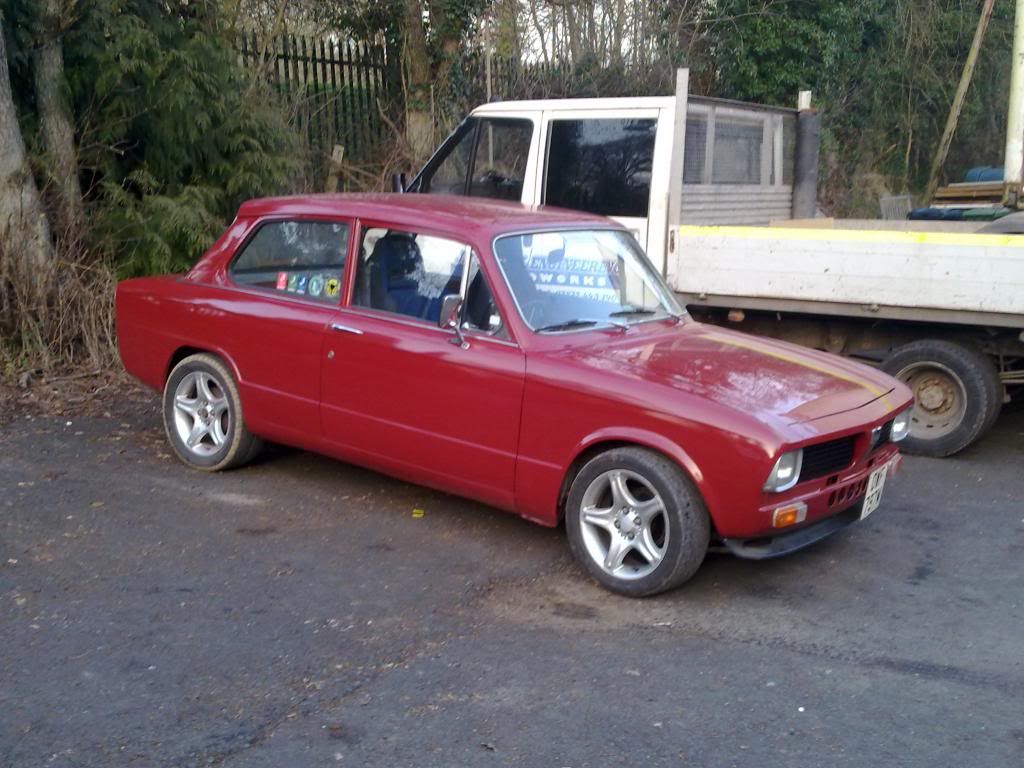Yes it does. The more you lower a dolomite the less traction on the rear wheels. I have to expiriment this on my brown road car first over a while to have it right on my stage rally car the first time. The more horizontal the rear links are, the less traction possible on the road what does result in lower cornering speed. A short explanation of my theory:Carledo wrote:
The rear suspension angles are not affected by lowering, the solid axle ensures the wheels always stay parallel. Dropping the front will increase negative camber - which is no bad thing. The limiting factor on dropping a Dolomite is ground clearance on the front subframe and the sump - as 1 or 2 of us have found out! 1.5" is probably an absolute max, any more and stuff will be scraping, especially on bumpy roads.
Steve
Most escort (all) and opel manta and more rwd rally cars do lower the back when accelerating hard. I think this is not weight transfer but rear geometry. Most of the rwd '70 and '80 rwd rally cars do have a 4 link rear suspension. From ford boreham is known for sure they did weld some links etc on an escort rally car, it handled better, made a drawing en reproduced many times. As ford did with more mods this way in those day's. Other makes did copy, also Triumph but that four link setup does not make sense at all. Ford has four parralel links so we at triumph also must have on the dolomite. Also the reason for the 48 weber on the sprint. No use at all but only because ford used 45 we have 48.
The lowering the back end when accelerating i think is caused by the geometry what pulls the legs in. So not lowering the body but pulling the axle towards the body. Thus taking the pressure of the road and causing less grip. Some cars have such an altered suspension like some USA cars, that cause tramping when accelerating. That is an extreme form from pulling the legs in by taking the wheel completely of the road. Fords do have the arms almost horizontal.
When highering a dolomite, the angle of the lower arms gets more so less pulling the legs. The more the angle is the axle wants to be pushed under the car accelerating hard. So the back goes up when accelerating. The wheels are pushed more to the road and more grip when accelerating out of a corner. I used to drive a highered dolomite and it cornered very well. My classic carreer begun with restoring Kreidlers and those had the swing arm construction at the front. Braking hard and the front of the moped did rise. Same effect but reversed ofcourse. I did drive many classic cars who do lift the back when accelerating totally std from factory. A common example are the volvo amazon's.
The conclusion is not highering your car does make it handle better but fit the arms higher in your bodyshell to have more angle. But that is not permitted by fia regulations since 1976. You have to use the original pick up points. The main reason for triumph to abandon the pour link. After 1976 there were only gp1 dolomites. Ford had it homolgated and could use but triumph did it under pre 1976 rules for gp2 and that was suspension pick up point free.
I did have had many discussions about this over the years with rally car builders and rally friends. Some agree, most not. Fords are build by the factory ford bible and the rest does something because the others have also. Most of the time A four link setup is better than the std so an improvement but it can be more effective. I did see some four link setups build by "renomated"" rally car builders they needed to use superflex bushes because with rose joints it wouldn even move up and down.
Jeroen (will let you know the outcome in about 2 years from now.)


